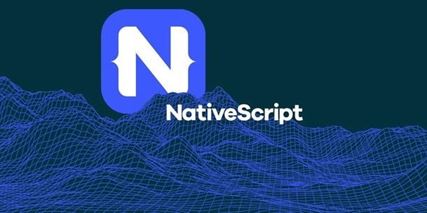If you have your own, original idea for a startup, but you are not sure yet if you are competent enough as a developer to realize it single-handedly or simply don't wish to go through ALL the differences between NativeScript and React Native, we will gladly help you! We will work on the project of any level of complexity and deliver the end result in the shortest terms possible.
When it comes to considering options of cutting budget dedicated to the mobile app development, the first thing that comes to mind is the cross-platform approach. Indeed, as opposed to the native development for each most common platform (iOS and Android), product founders can save up to 40-50% of financial and time resources that way. As for the choice of software tools for the creation of cross-platform solutions, leaders in the niche are React Native and NativeScript.
In the following article, we'll make a detailed comparison of React Native and NativeScript and figure out which of these two renowned frameworks you should ultimately choose.
NATIVESCRIPT BRIEF OVERVIEW

NativeScript is an open-source framework for the creation of cross-platform applications for iOS and Android with the help of platform-independent programming languages, such as TypeScript or JavaScript. It is the Telerik company's offspring, which was initially released to the public in 2015. NativeScript employs native rendering and the elements of native UI. It provides access to hardware functions right out of the box, without requiring to install any plugins. According to the framework creators, in the process of app development, you can use regular web technologies and models like FlexBox and CSS and get the native user interface and the performance similar to that provided by native iOS and Android SDK as a result. NativeScript can also be easily integrated with Angular 2.0. Among the most renowned companies that prefer using this framework are Hybrid Heroes, GeekyAnts, and Navarda.
REACT NATIVE BRIEF OVERVIEW

React Native (RN) is a JS-framework developed by Facebook, released in 2015. It is based on the ReactJS library. The main feature of this solution is its ability to involve native components during the building of UI that set up the connection with JS code through personal bridges (i.e. it doesn't use WebView and HTML technologies). This is exactly what makes the apps created with the RN similar in the speed of performance with native analogs. This framework is frequently used for startups, all due to the well-composed documentation (even novices will be able to get a grip of the specifics) and the fact that it's absolutely free of charge. The famous companies that use RN are Instagram, GoSquared, and Webedia.
Now, let's take a look at the pros and cons of NativeScript as well as the pros and cons of React Native to figure out which is a more advanced solution.
NATIVESCRIPT VS REACT NATIVE: WHICH ONE IS STRONGER?
Without further ado, here's the comparison of React Native and NativeScript development frameworks by specific aspects:
- Learning curve. NativeScript supports the declarative coding style and allows for developers to create apps based on AngularJS, JavaScript, and TypeScript. This means that if you aren't satisfied with the way a certain feature is realized in one language, you can easily switch to another language in a single framework.
- As for the React JS-based RN, you'll need a confident command in JavaScript. Both these frameworks are generally regarded as "accessible to master' so you should only make a choice based on your developer experience in this aspect.
- Application size. The bad news for those who decide to choose NativeScript for the development of apps with complex business logic is the large size of the end solutions (at least as opposed to the size of RN solutions). Unfortunately, high-speed 3G/4G Internet connection isn't available to a huge number of people living in the countries of the third world. The app size can be a decisive factor in reaching as wide a target audience as possible.
- Plugin & third-party solutions support. As a counterbalance to the previous point, we'd like to notice that NativeScript has the whole dedicated web resource with plugins to fit any possible development needs. This makes the necessity to employ third-party solutions almost obsolete. RN doesn't have such a specialized website, but there are plenty of communities where you can find all the required plugins if you look well enough.
- Performance. This is the point where RN doesn't leave any chances to the opponent. It's difficult to find another solution similar in this criteria to the RN. Using Virtual DOM, the framework renders dynamic elements practically in the flick of the switch reaching the level of speed close to apps written via native SDKs. In the case of NativeScript, the rendering is quite slower, which is a no-go for applications that require the enhanced responsiveness (most interactive solutions).
- Interaction with native APIs. With NativeScript, developers gain direct access to native iOS and Android APIs. Thus, you may not need any native development languages knowledge whatsoever to work (the knowledge of Kotlin and Java for Android and Objective-C and Swift for iOS).
- RN doesn't provide such capabilities. RN connects with native APIs, as we've already mentioned, with the help of special bridges. Here's where you may need skills in the corresponding native languages. Notice that the most APIs feature the readymade bridges conveniently provided by developers in the official RN community. In some cases, however, programmers are obliged to put a good amount of effort to create such a bridge and integrate it with the existing code.
- Online community. Despite the fact that React Native and NativeScript are practically of the same age, the first has a much larger Internet community. The thing is, RN was built by the Facebook developers - one of the most progressive developer teams in the world. This makes the extensive popularity and fanbase of RN as opposed to any other cross-platform framework only reasonable.
REACT NATIVE VS NATIVESCRIPT: CONCLUSION

Let's summarize our take on the React Native vs NativeScript stand. As you can see, both frameworks are quite advanced for building commercial solutions with their capabilities. On the other hand, in order to fully answer the questions "NativeScript vs React Native: which one is stronger?" and make the most proper, reasonable decision which to choose, all the nuances of your particular project must be carefully considered. In particular, React Native can boast the performance and a solid list of companies preferring to work with it. In turn, NativeScript provides for developers access to native APIs and third-party libraries, which is a principally important criterion in the selection of the framework for developers looking for the unprecedented flexibility.
Conclusions
Popular in blog
View allWe’ll contact you within a couple of hours to schedule a meeting to discuss your goals.
- PROJECT INQUIRIES info@artjoker.net
- CALL US +1 213 423 05 84
contact us:









